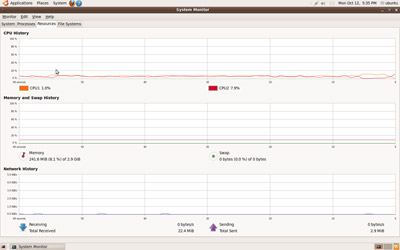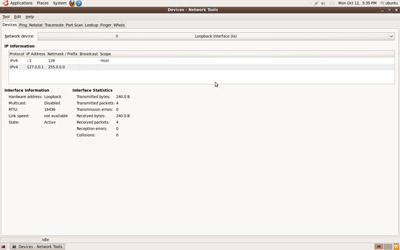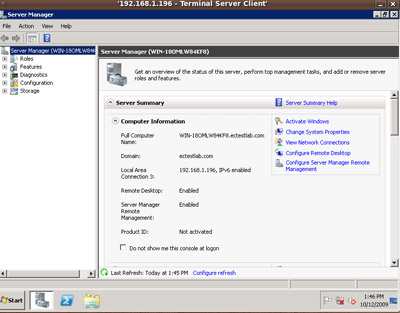對于Ubuntu 9.10 vs Windows 7:特性逐一比較(三)
以下主要講對于Ubuntu 9.10 vs Windows 7的特性逐一比較,讓那些對兩種特性都迷茫不好取舍,所以在此發出Ubuntu 9.10 vs Windows 7特性比較,希望可以使大家更好選擇。
以下接《對于Ubuntu 9.10 vs Windows 7:特性逐一比較(二)》
系統測試
Microsoft beefed up system problem detection and remediation in Windows 7 with the Troubleshooting feature in the Control Panel. Ubuntu has its own troubleshooter in the form of "System Testing." This utility tests a variety of components such as audio and video for problems and suggests configuration changes to optimize performance.
微軟在控制面板里提供了Troubleshooting功能,以加強對系統問題的檢測和糾正。Ubuntu有它自己的troubleshooter,名字叫“系統測試”。此工具對諸如聲卡、顯卡之類的大量硬件進行測試,找出問題并提出配置建議,以增強系統的性能。

System Monitor
系統監視器
System Monitor is Ubuntu's counterpart to Windows' Performance Monitor. As in Performance Monitor, System Monitor allows users to track processes and system resources such as CPU usage and network traffic.
系統監視器是Ubuntu中對應Windows性能監視器的軟件。就象Win的性能監視那樣,系統監視器允許用戶跟蹤進程和系統資源,如CPU的占用情況、網絡流量情況。

Network Tools
網絡工具
Ubuntu 9.10 comes with a native Network Tools client that gives users a bit more information about network status than is available within the Windows 7 GUI alone, such as Port Scans.
Ubuntu 9.10 自帶一個本地的網絡工具客戶端,它向用戶提供了比Windows 7稍多的網絡狀態信息,比如Port Scans。

Terminal Services
終端服務
Ubuntu 9.10 has both a Terminal Services client and Remote Desktop. Here, we are using Terminal Services to remotely and effortlessly connect to a Windows Server 2008 machine.
Ubuntu 9.10有一個終端服務客戶端和一個遠程桌面。我們正在使用終端服務非常方便地遠程連接到一臺運行Windows Server 2008 的機器。
希望本章《Ubuntu 9.10 vs Windows 7:特性逐一比較》對大家有所幫助。
【編輯推薦】

























